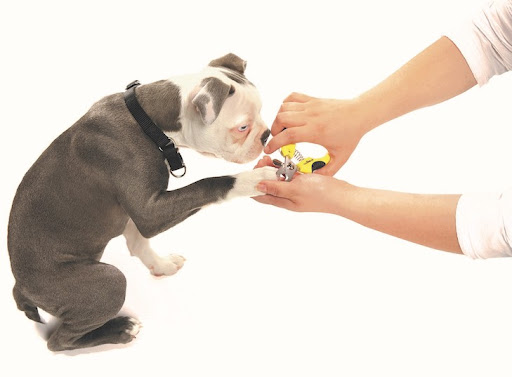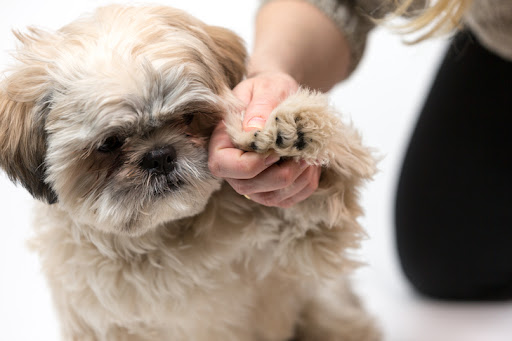Nail trimming is an essential part of pet grooming, and trim nails are one clear sign of your dog or cat’s good health and hygiene. Professional groomers will perform the task for squeamish owners, but nail trimming is a simple procedure if done correctly
Since nail trimming can be an anxiety-laden experience for many dogs and cats, start handling your puppy’s feet and trimming their nails when they’re young, so they become accustomed to the process. Some dogs and cats will sit in your lap or on a table while you clip their nails, while others may need some form of restraint.
Tip: You can make the process more fun for your pet by letting them lick bacon off a silicone wall mat or from a tube of tasty treat paste while you handle their nails.
You can find them in our store here.
Getting Your Pet Comfortable
In as little as one week, you can have one of those rare pets who doesn’t mind nail trimming one bit. But, if it takes your pup a little longer to get used to it, don’t despair. Be patient, keep a gentle and positive attitude, and continue to offer praise and treats. Make sure to use safe, pet-friendly clippers or grinders.
Tip: It helps if you frequently touch and hold their paws (gently and cheerfully) right from the first day, so they won’t become sensitive to having their feet handled.
Day 1: Let your dog sniff the nail clipper or grinder. Give a treat and praise.
Day 2: Touch the nail clipper or grinder lightly to each paw. Give a treat and praise.
Day 3: Touch the nail clipper to each paw and squeeze the clipper so they hear the sound, or turn the grinder on and let them feel the vibration. Don’t actually trim a nail. Give a treat and praise.
Day 4: Touch the nail clipper or grinder to your pet’s feet again. Give a treat and praise.
You can choose the nail grinder that you like the most here.
Day 5: Try trimming off just the very tiniest tip from one front paw nail. Only do one nail. Offer lots of happy praise and a treat if your puppy lets you. Even if he lets you, just do one. Repeat every day until he lets you do this and doesn’t seem to mind.
Day 6: Try trimming just the tip off of just two nails.
Day 7: Keep working your way up, trimming additional nails each day, until you’ve got them all and your puppy doesn’t mind. Practice even when you don’t need to clip a nail. Even pretending you are clipping and going through the motions help your pup get used to the whole process.
Trimming Your Pet’s Nails

There are several types of pet nail trimmers, including scissors, grinder tools specifically designed for dogs and cats, and guillotine types. You can use whatever type you are most comfortable with, or whatever works best for your pet. It’s a good idea to have some styptic powder or other clotting powder on hand to stop bleeding in case you cut a nail too short.
“If you’ve never clipped a dog or cat’s nails before, you may want to have your veterinarian or vet tech give you a lesson on how to do it,” suggests Dr. Jerry Klein, AKC’s chief veterinary officer.
Here are the steps to follow to properly trim your pet’s nails:
Pick up a paw and firmly, but gently, place your thumb on the pad of a toe and your forefinger on the top of the toe on the skin above the nail. Make sure none fur is in the way.
Push your thumb slightly up and backward on the pad, while pushing your forefinger forward. This extends the nail.
Clip only the tip of the nail, straight across. Include the dewclaws, located on the inner side of the paw.
Avoid clipping past the curve of the nail or you risk hitting what is called the quick (the pink area of the nail that contains the blood vessels). A nick there is painful and will bleed. For pets with dark nails, watch for a chalky white ring.
Grind your dog’s nails using a safe tool.
We really like the Fuminator, check it out here.
Only grind a small part of your dog’s nail at a time. Support the dog’s toe firmly but gently.
Grind across the bottom of the nail and then carefully in from the tip of the nail, smoothing rough edges.
For better control, hold the grinder higher up, towards the top. Keep your dogs comfortable and take note of any sensitivities. If your dog has long hair, make sure to keep it back from the grinding tool so it doesn’t get caught.

